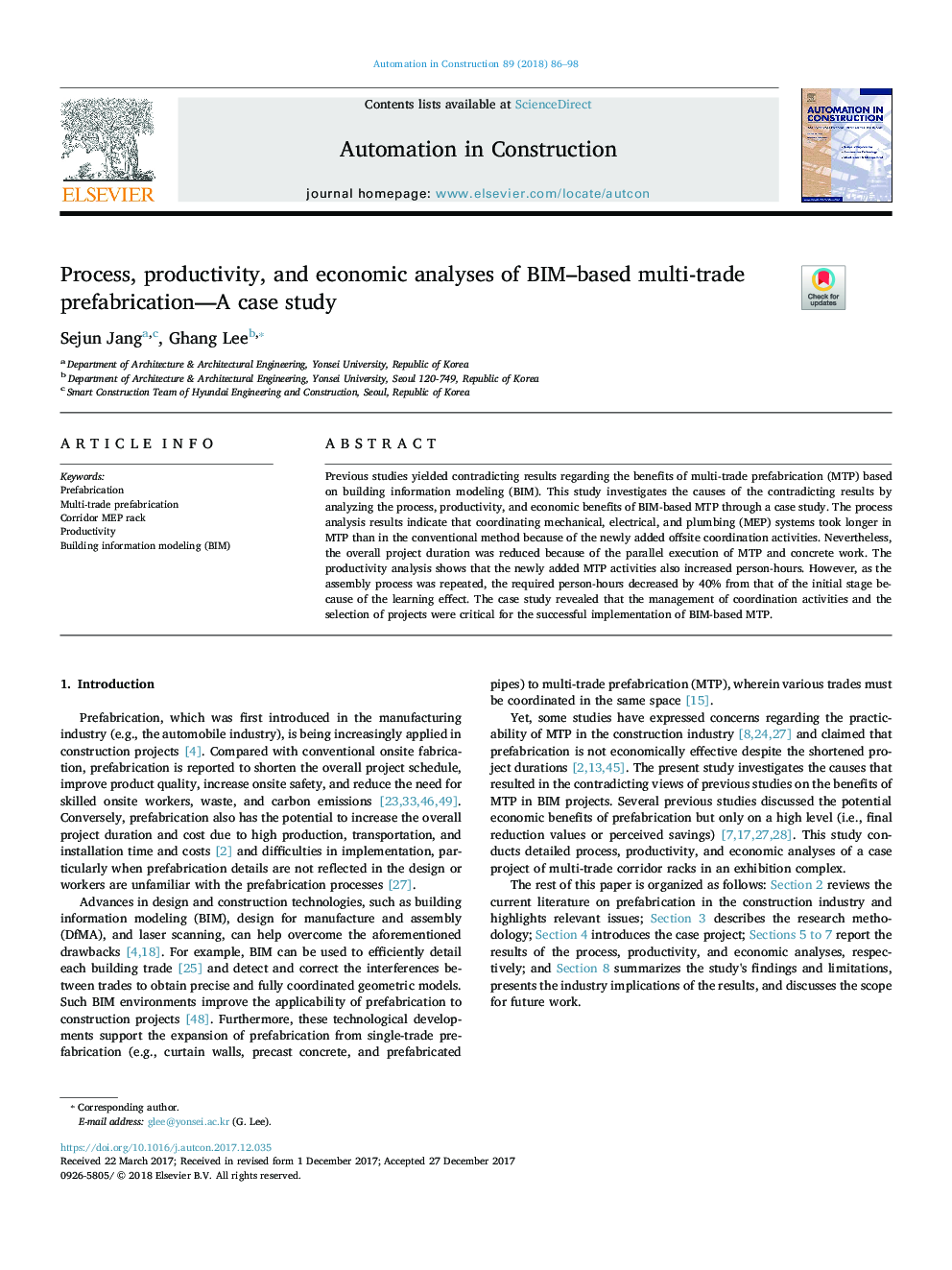| Article ID | Journal | Published Year | Pages | File Type |
|---|---|---|---|---|
| 6695687 | Automation in Construction | 2018 | 13 Pages |
Abstract
Previous studies yielded contradicting results regarding the benefits of multi-trade prefabrication (MTP) based on building information modeling (BIM). This study investigates the causes of the contradicting results by analyzing the process, productivity, and economic benefits of BIM-based MTP through a case study. The process analysis results indicate that coordinating mechanical, electrical, and plumbing (MEP) systems took longer in MTP than in the conventional method because of the newly added offsite coordination activities. Nevertheless, the overall project duration was reduced because of the parallel execution of MTP and concrete work. The productivity analysis shows that the newly added MTP activities also increased person-hours. However, as the assembly process was repeated, the required person-hours decreased by 40% from that of the initial stage because of the learning effect. The case study revealed that the management of coordination activities and the selection of projects were critical for the successful implementation of BIM-based MTP.
Related Topics
Physical Sciences and Engineering
Engineering
Civil and Structural Engineering
Authors
Sejun Jang, Ghang Lee,
